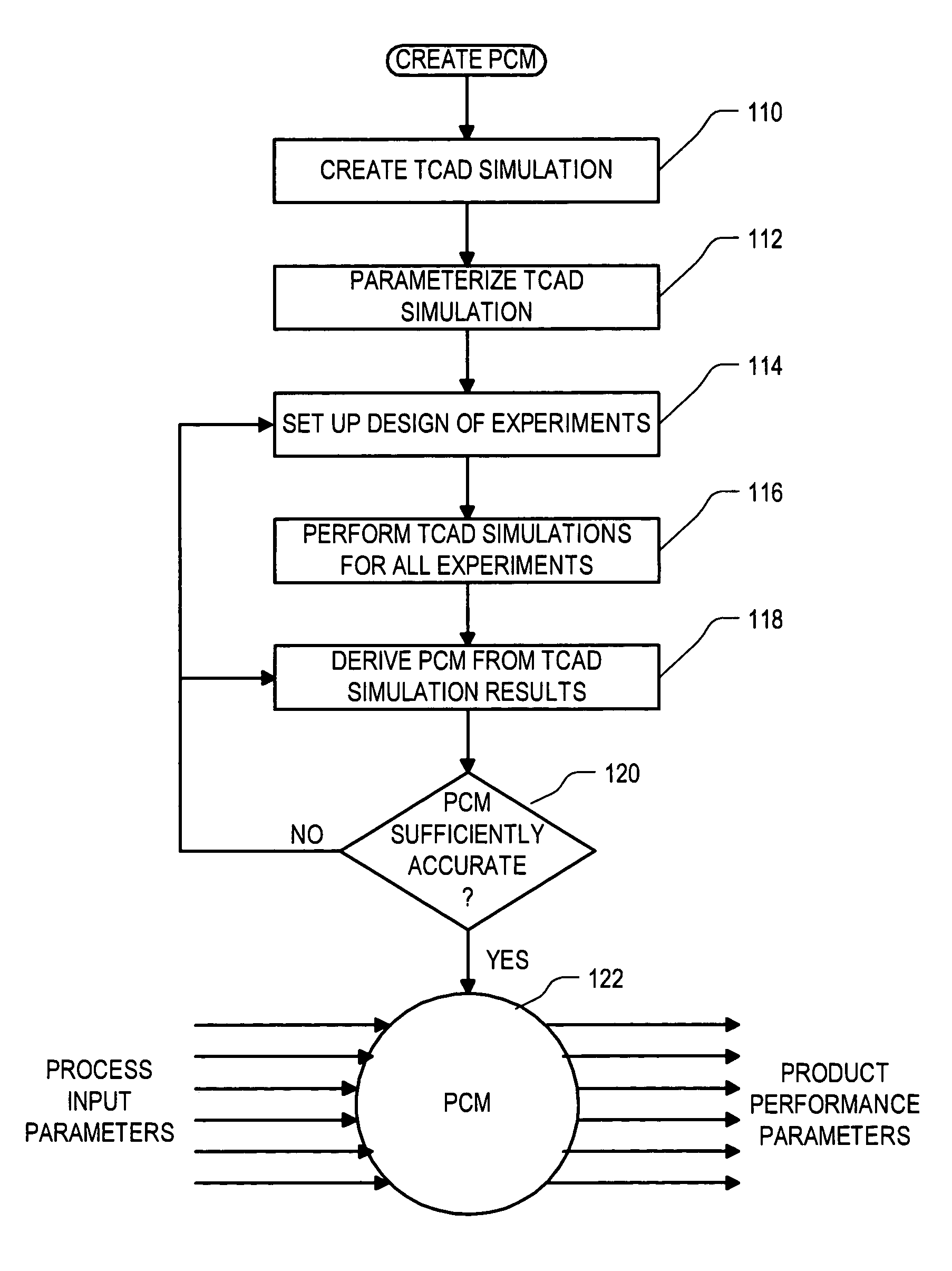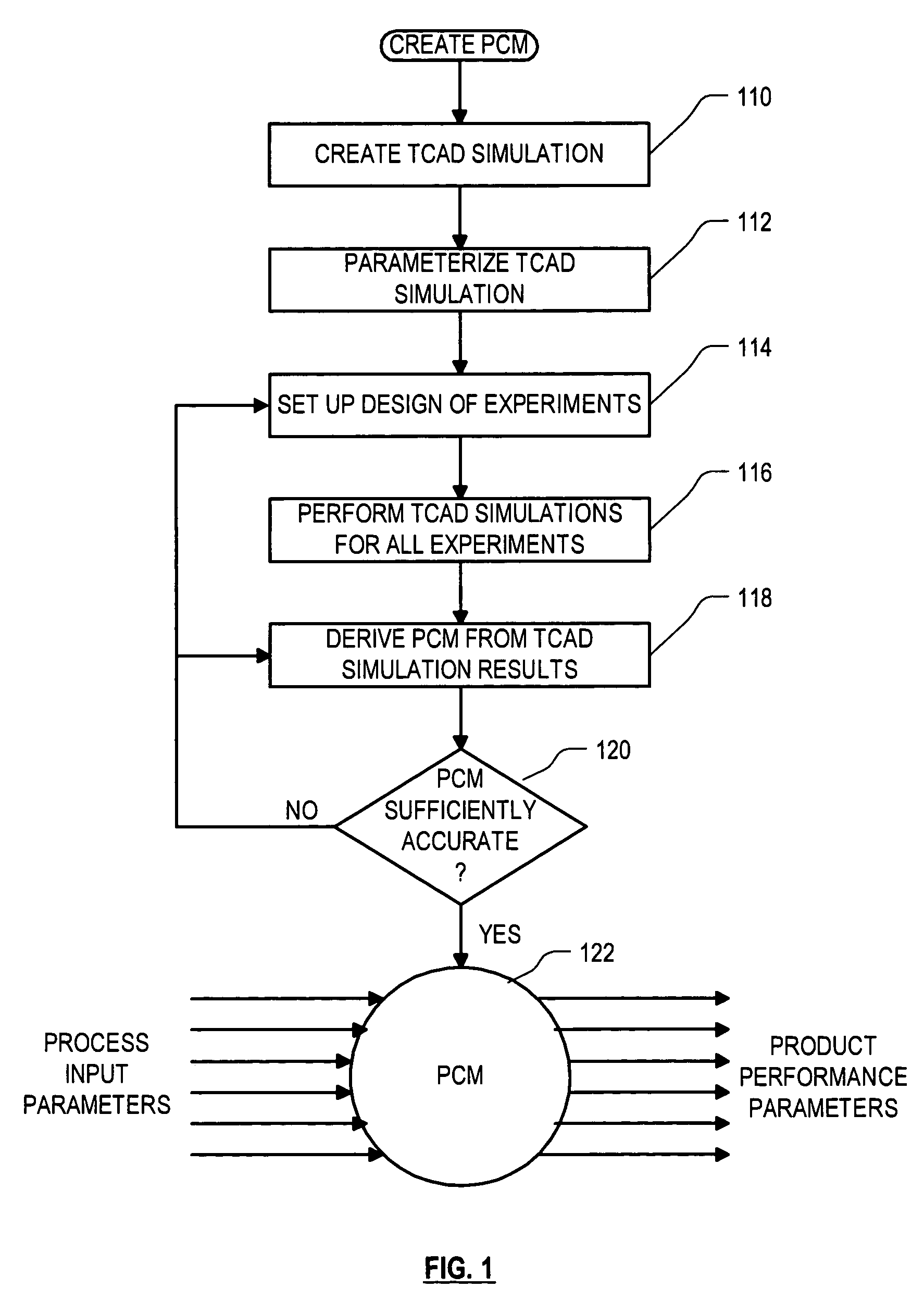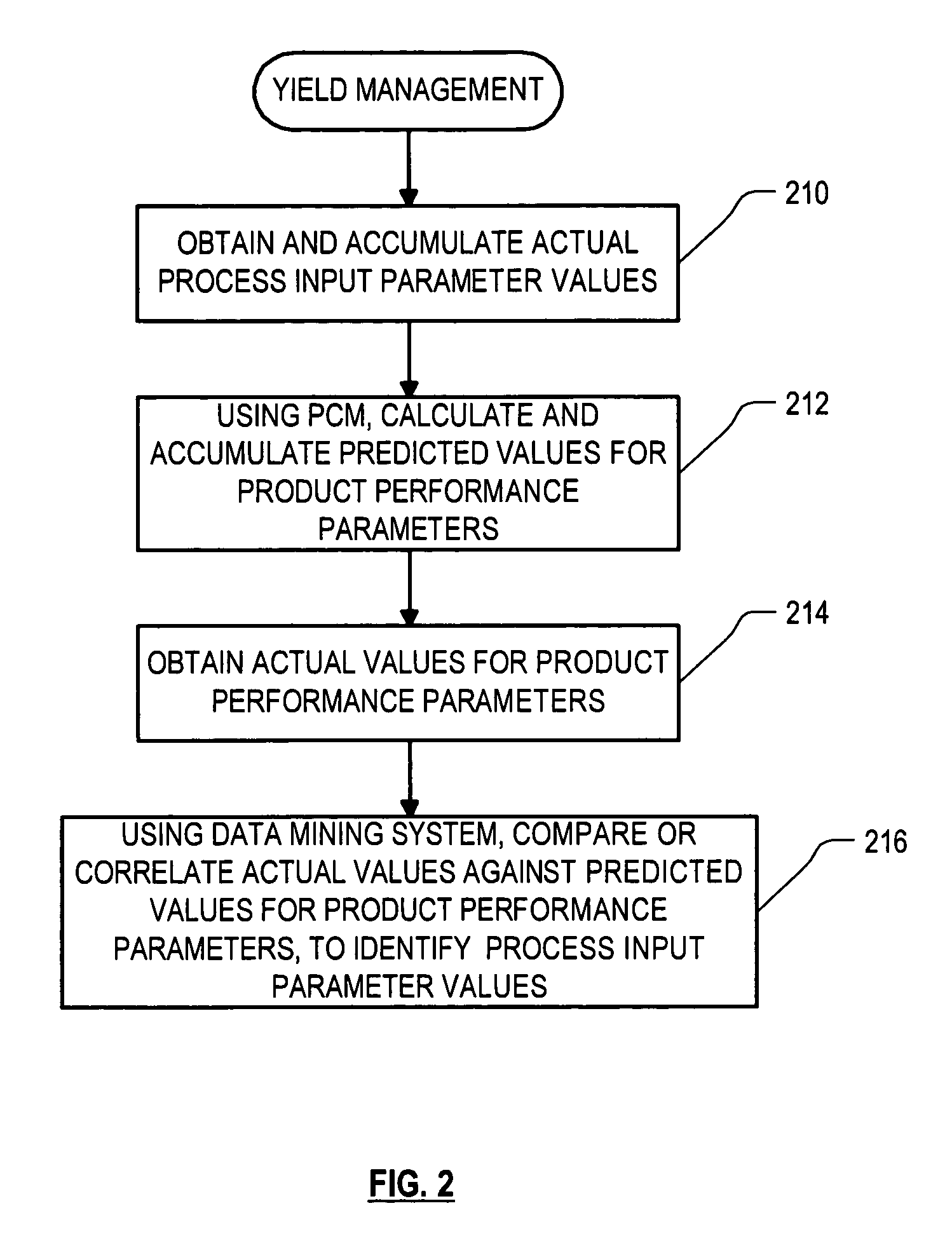Method and system for enhancing the yield in semiconductor manufacturing
a technology of semiconductor manufacturing and yield enhancement, applied in the direction of program control, total factory control, instruments, etc., can solve the problems of increasing the subjectivity of yield to other limiting factors, difficult control of process steps, and high cost, so as to improve the accuracy of physical modeling, the effect of increasing complexity and loss of accuracy
- Summary
- Abstract
- Description
- Claims
- Application Information
AI Technical Summary
Benefits of technology
Problems solved by technology
Method used
Image
Examples
Embodiment Construction
[0040]The following description is presented to enable any person skilled in the art to make and use the invention, and is provided in the context of a particular application and its requirements. Various modifications to the disclosed embodiments will be readily apparent to those skilled in the art, and the general principles defined herein may be applied to other embodiments and applications without departing from the spirit and scope of the present invention. Thus, the present invention is not intended to be limited to the embodiments shown, but is to be accorded the widest scope consistent with the principles and features disclosed herein.
[0041]In FIG. 1, a PCM 122 is shown together with its process parameter inputs and its product performance parameter outputs. The PCM can be used in a variety of different ways to enhance the manufacturing process. In various different use scenarios, actual or desired values are provided for some of the parameters, and actual or desired values ...
PUM
 Login to View More
Login to View More Abstract
Description
Claims
Application Information
 Login to View More
Login to View More - R&D
- Intellectual Property
- Life Sciences
- Materials
- Tech Scout
- Unparalleled Data Quality
- Higher Quality Content
- 60% Fewer Hallucinations
Browse by: Latest US Patents, China's latest patents, Technical Efficacy Thesaurus, Application Domain, Technology Topic, Popular Technical Reports.
© 2025 PatSnap. All rights reserved.Legal|Privacy policy|Modern Slavery Act Transparency Statement|Sitemap|About US| Contact US: help@patsnap.com



